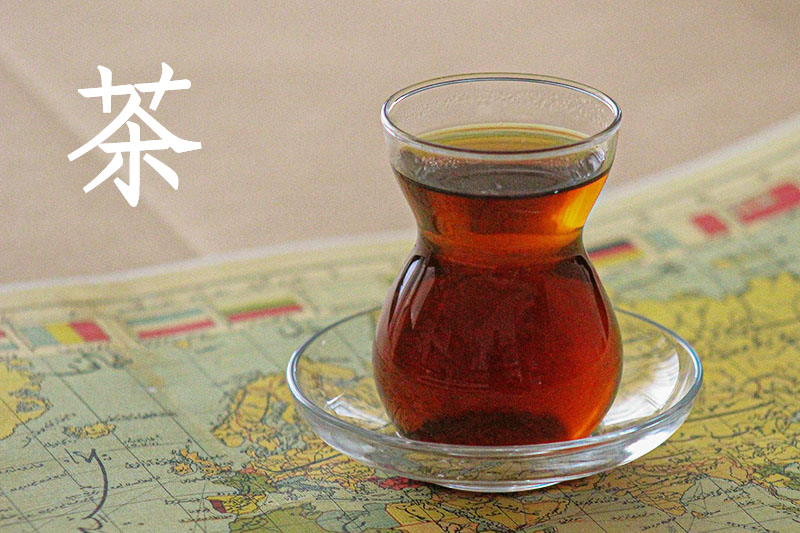Every 21 February is the United Nations’ International Mother Language Day. We dive into the linguistic origins of our beloved beverage.
What is tea called around the world? ‘Tea if by sea, cha if by land’ is a general linguistic rule you might hear bandied about – but what does it mean?

In the early days of the tea trade, China exported tea by two routes: over land on the Silk Road towards Russia, the Middle East, and eventually Eastern Europe; and by sea to Southeast Asia, the Netherlands and its colonies, the UK and its colonies, and Western Europe.
If the importing country received their tea via the Silk Road, they were likely to call it a variation of the Mandarin word for tea, which is chá (茶), hence ‘chay’ in Russian and ‘shay’ in Arabic, ‘chai’ throughout India and South Asia, and ‘çay’ in Turkish. Japan and Korea, which both have linguistic roots in Chinese, use the original ‘cha’.
However, the Min Nan dialect of Chinese in southern Fujian called tea ‘te’ (pronounced ‘teh’). The dialect was prevalent along the southern coast of China and Taiwan, which meant that if the tea left by sea, it was likely to be called a variation on the word ‘thee’, thanks to the Dutch, who traded heavily in that area. Hence you’ll hear ‘teh’ in Malaysia and Indonesia, ‘thé’ in French, ‘té’ in Spanish, ‘tae’ in Ireland and ‘tee’ in German. Even the Polish word ‘herbata’, and its descendants such as the Belarusian ‘harbáta’, spring from the combination of herba + thea, a New Latin term that takes thea from ‘thee’.
There are a few interesting exceptions, however. Although tea came to the Portuguese via sea, they use ‘cha’ because they had their own trading route out of Macau (rather than Fujian or Taiwan like the Dutch), and Macau used ‘cha’. Places other than Han-dominated China where tea is native, such as Laos, Thailand and Burma, have their own words for tea: for example, ‘miang’ in Thai and ‘lahpet’ in Burmese, with many indigenous languages using ‘la’ as their base.
The lineage for tea as a beverage is so focused in China that it makes sense that the word for it has such clear linguistic branches based on its roots and trade connections. Whatever you call it, you can certainly sate your mother tongue with a cuppa at any time.
This article originally appeared in AUSTCS enews 11 February 2025.